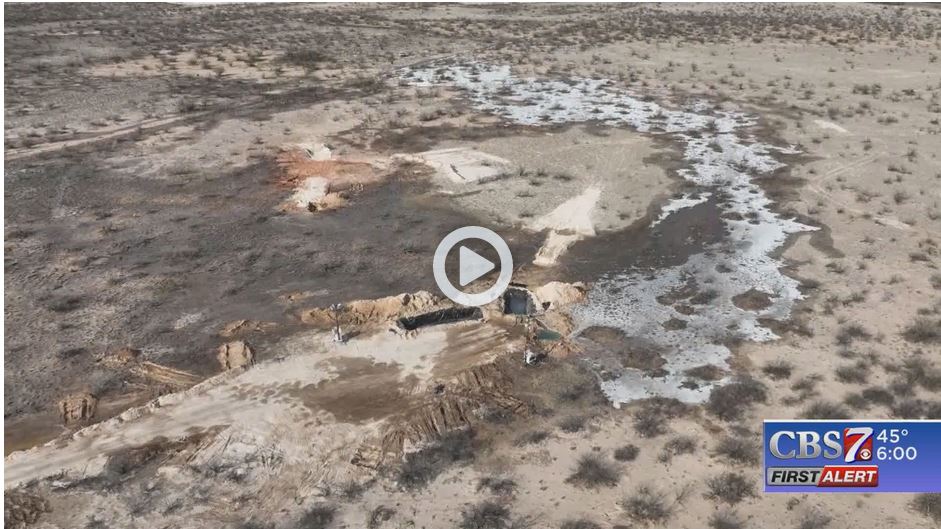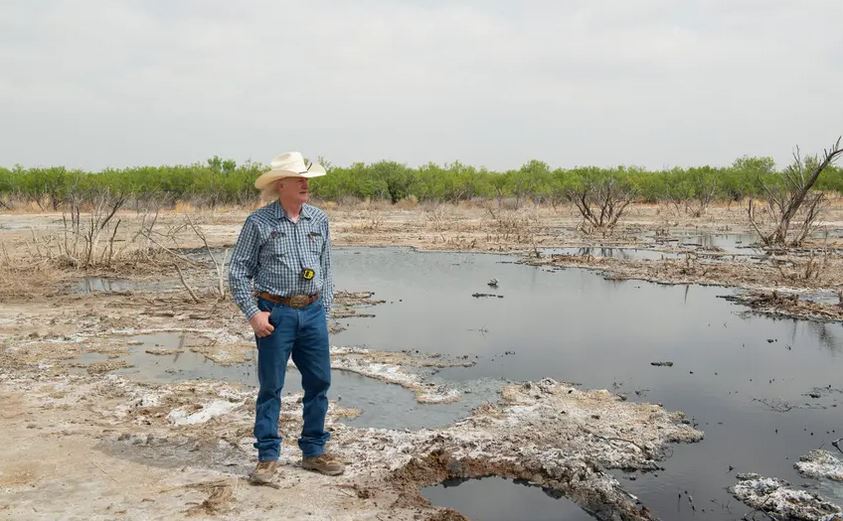Three scientists with the Department of Earth Sciences at Southern Methodist University have published the results of a study of blowouts of old wells in the Permian Basin caused by injection of produced water. The summary from the study:
Wastewater, a byproduct during oil extraction, is generally injected back into the ground. Permian Basin has witnessed several incidents of leakage of wastewater in the last 3 years. Recently in January 2022, huge amounts of wastewater were expelled at a high pressure from an old well. We used satellite data and wastewater injection data to understand the cause of these events. We found that the wastewater injection happening nearly several kilometers away is responsible for these leakages. We also discovered a highly pressurized wastewater lake below the surface in this region using geophysical modeling. Due to high pressures, the land in this region rose by 40 cm in just 2 years. Meanwhile, a part of this region sunk by 3 cm because of the leakage in January 2022. Our findings raise concerns about the potential for more leakages in the near future if action is not taken.
The study focused on the Central Basin Platform in the Permian Basin:
 Oil and Gas Lawyer Blog
Oil and Gas Lawyer Blog




